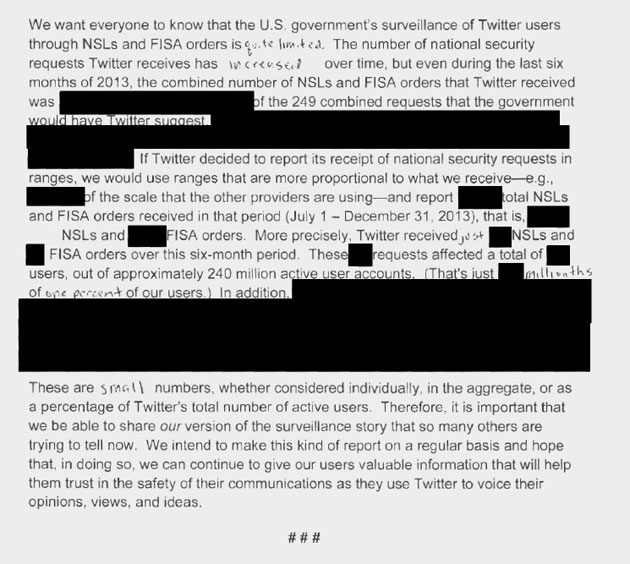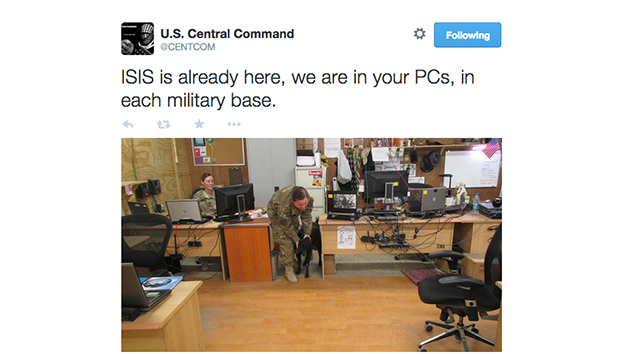On Monday morning, Twitter released its most recent transparency report. Every 6 months, the company voluntarily discloses its data on government and law enforcement requests for information about Twitter users. However, the government has barred Twitter from sharing much of anything about its secret surveillance requests. These include national security letters, or secret requests for information, and subpoenas obtained under the Foreign Intelligence Surveillance Act. Twitter sued the US government in October to allow it to release more information (the case is still pending), and today, the government allowed Twitter to publish a heavily redacted version of a letter the company drafted to inform its users about surveillance requests. The letter states that the government surveillance authorized by national security letters and FISA orders has been “quite limited.” According to a Twitter spokesman, parts of the letter were redacted but it was otherwise unchanged by the government (including the handwritten parts). Read part of the letter below:
















